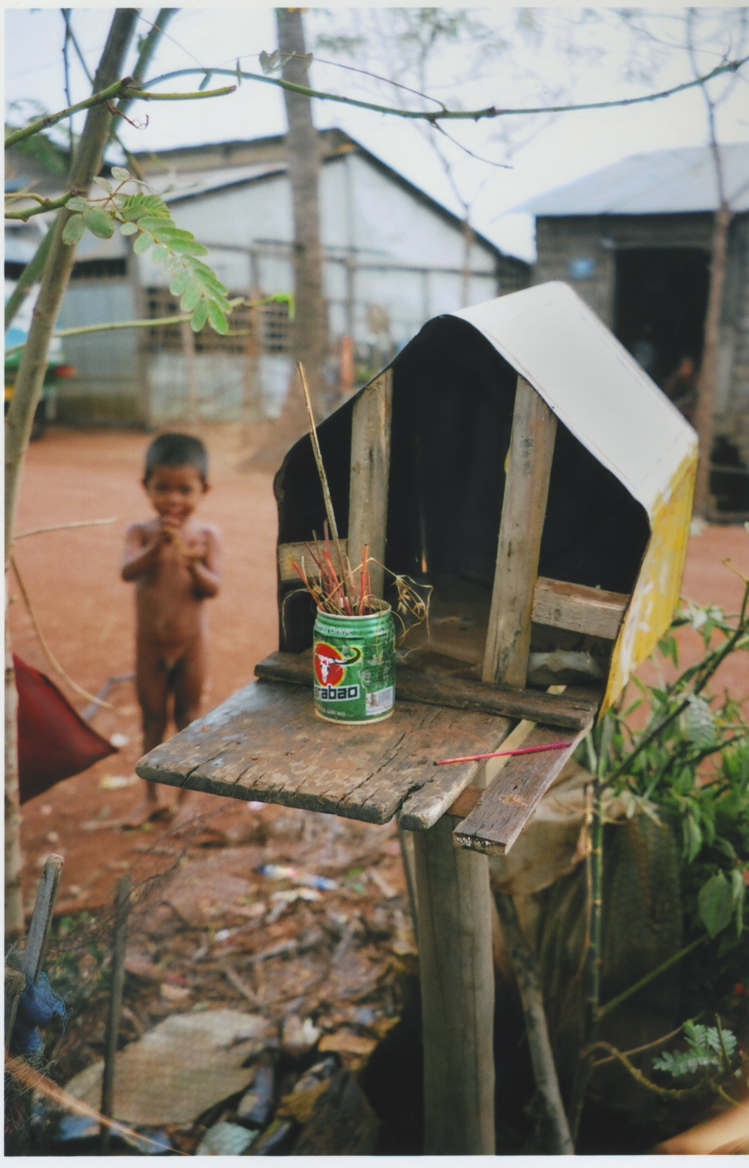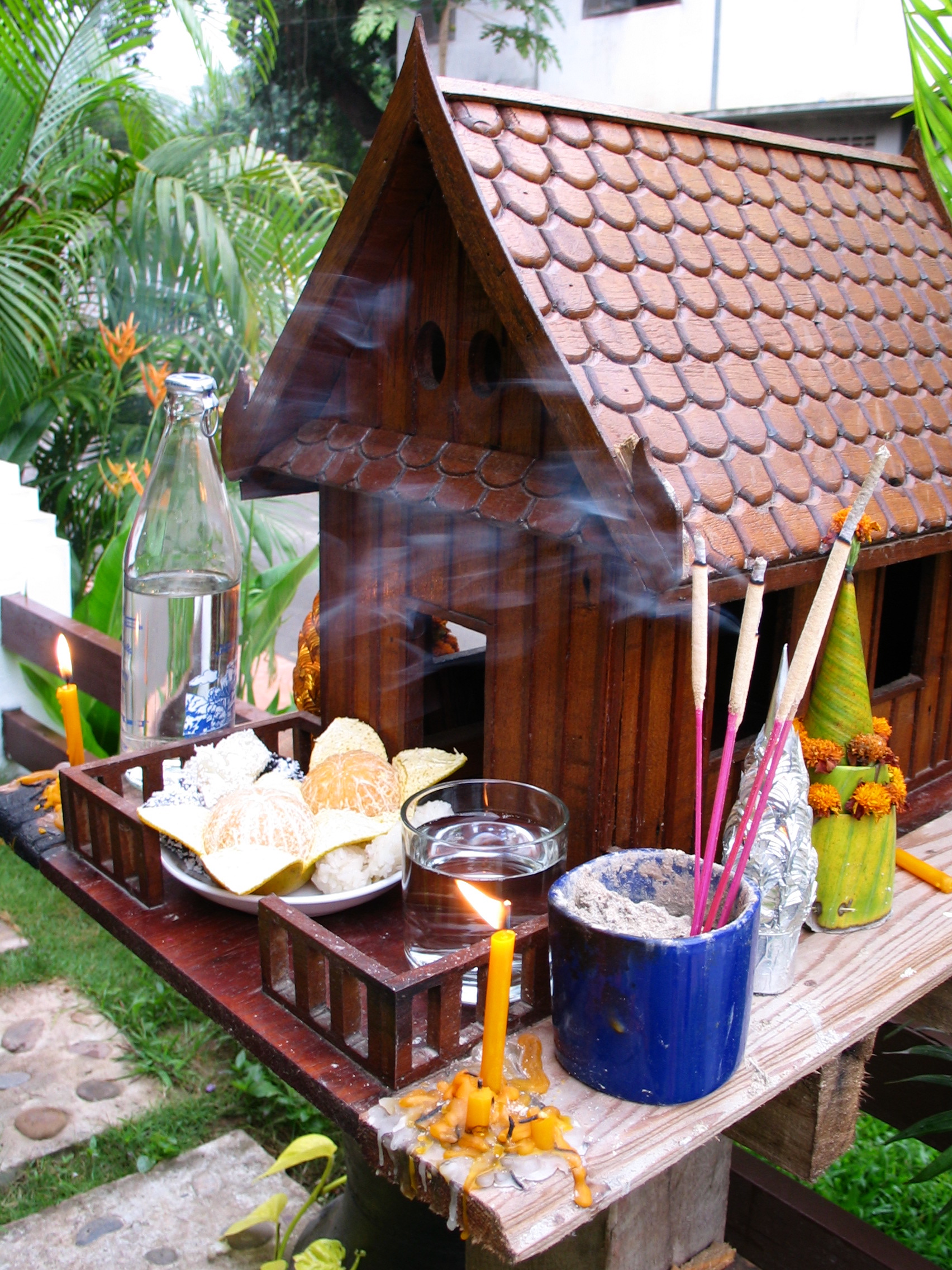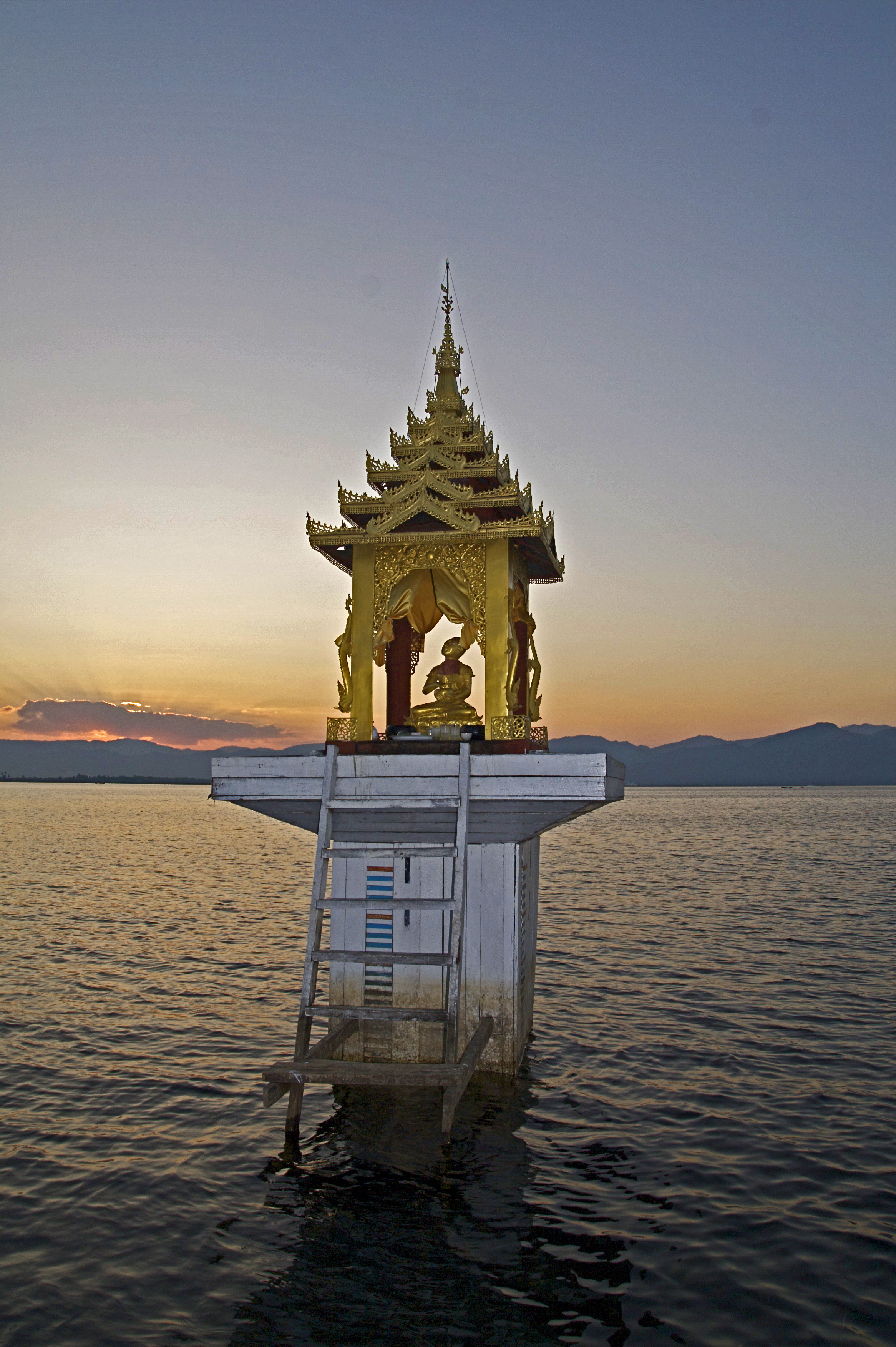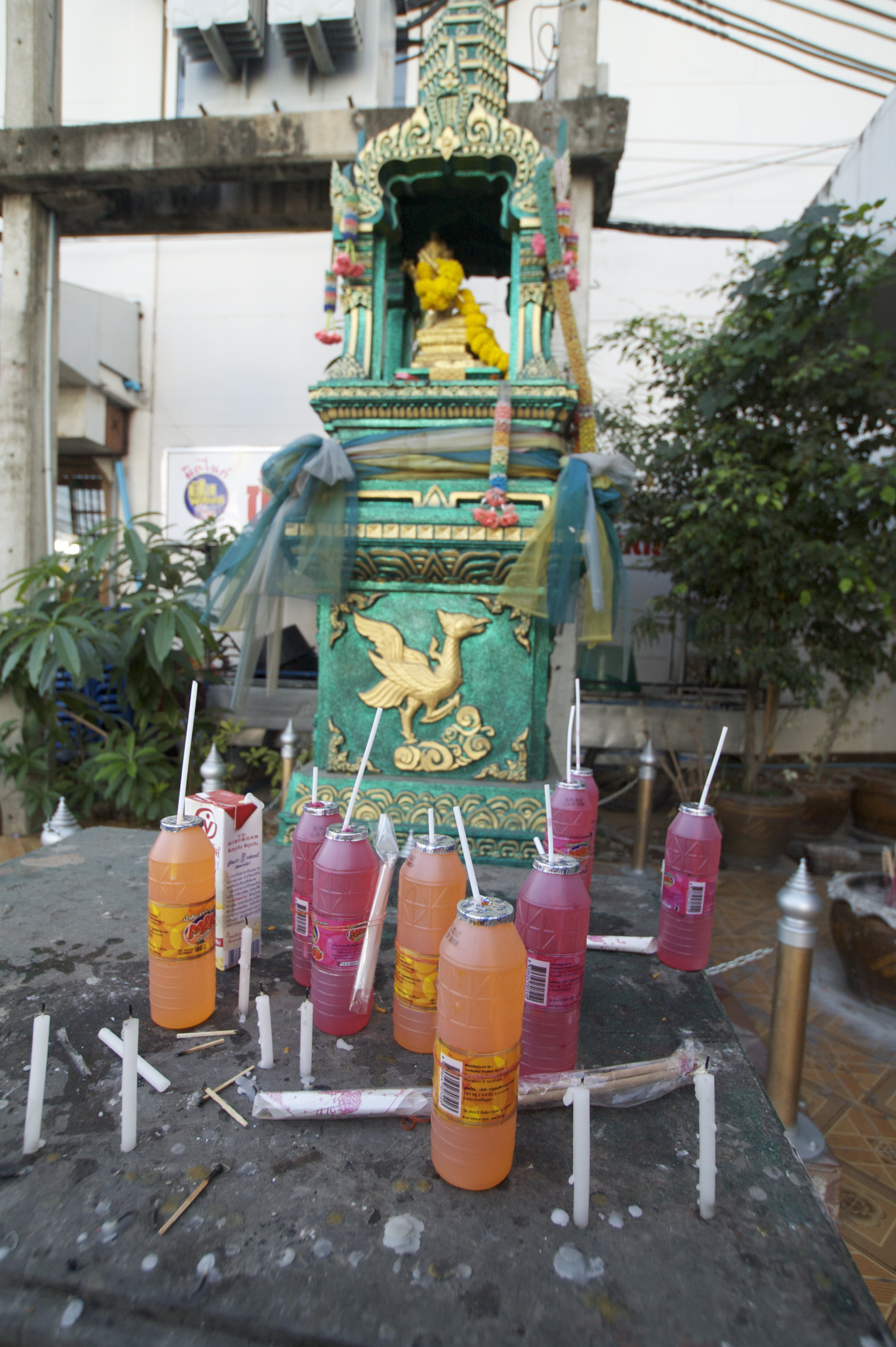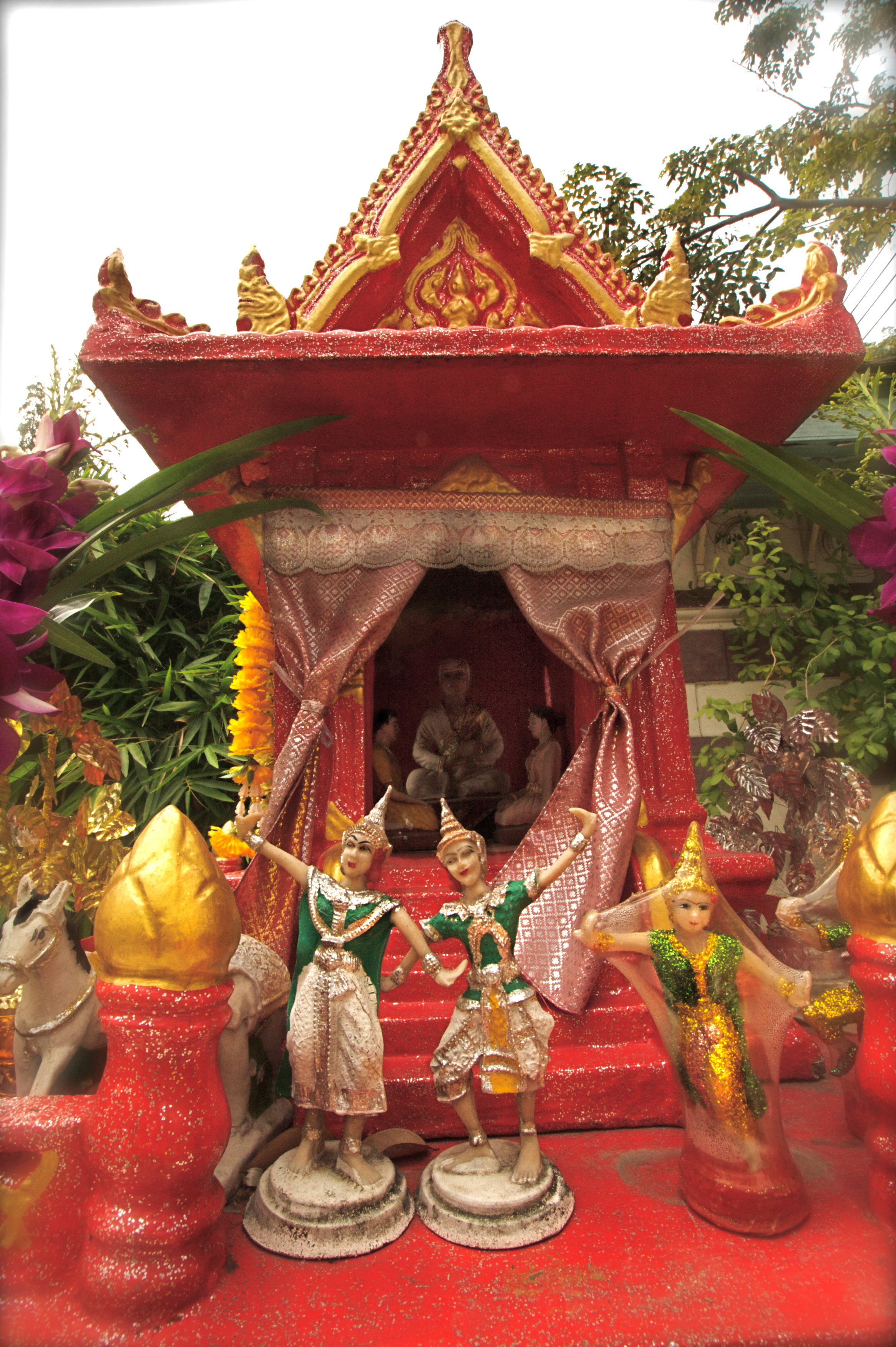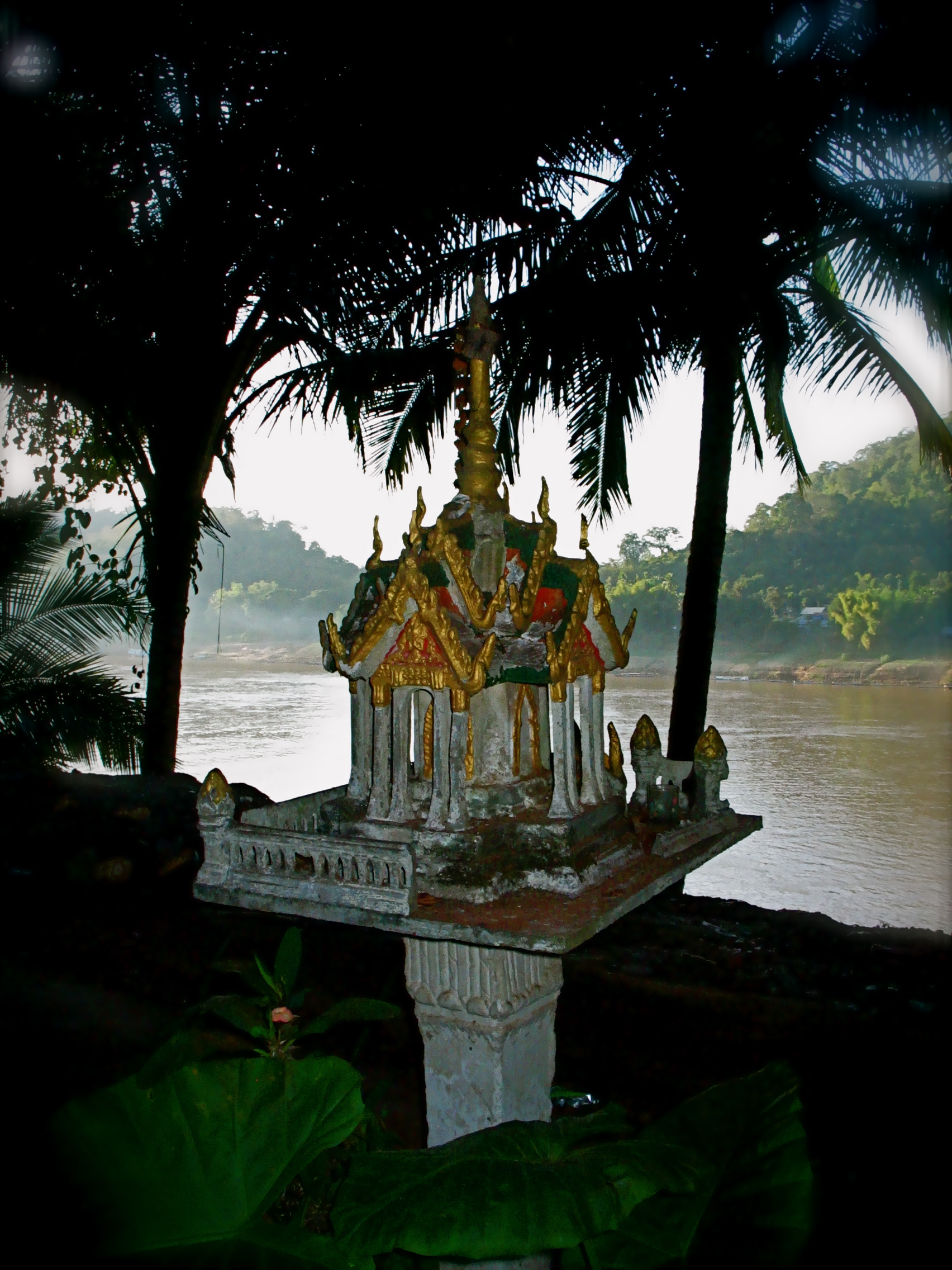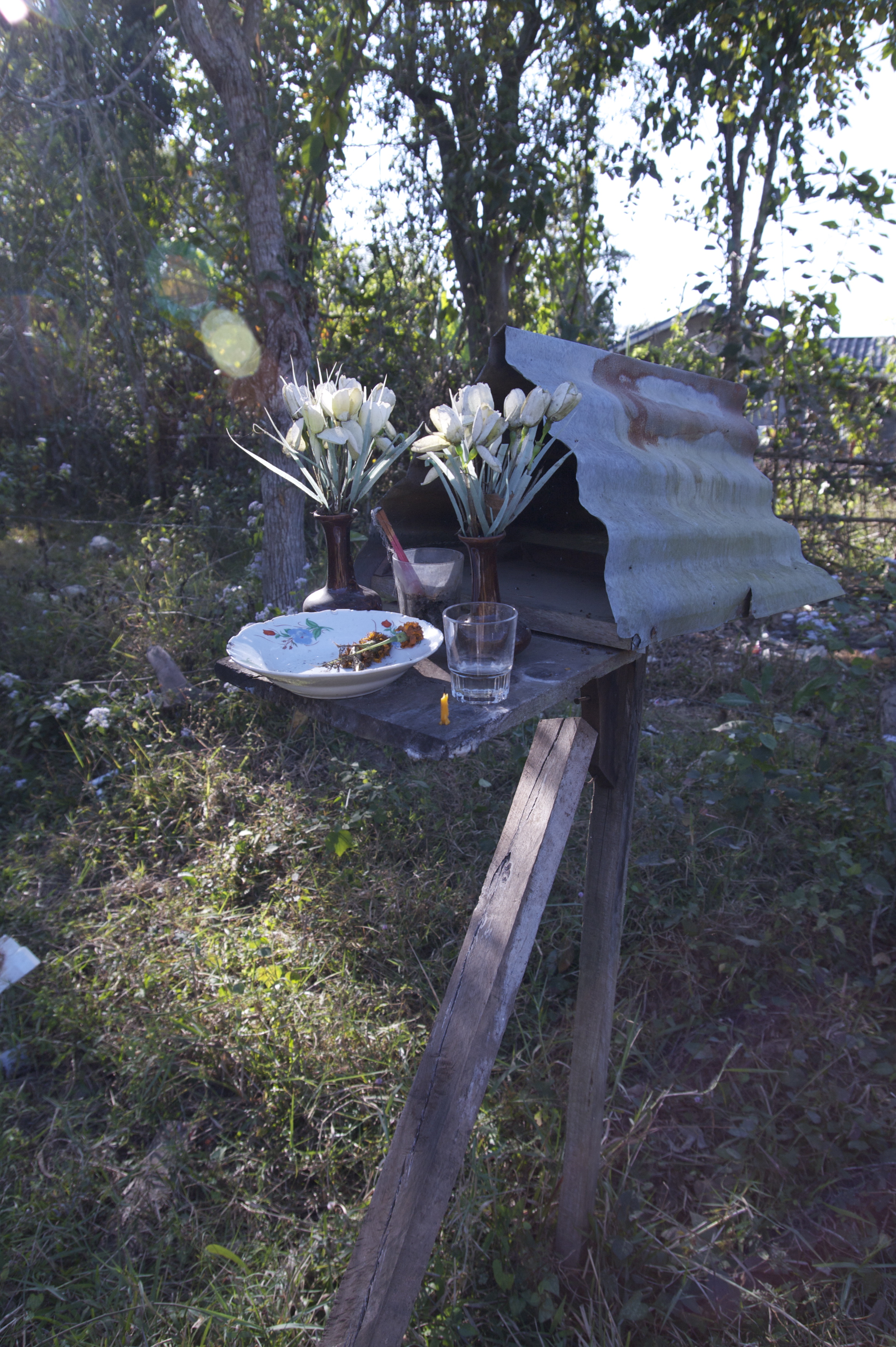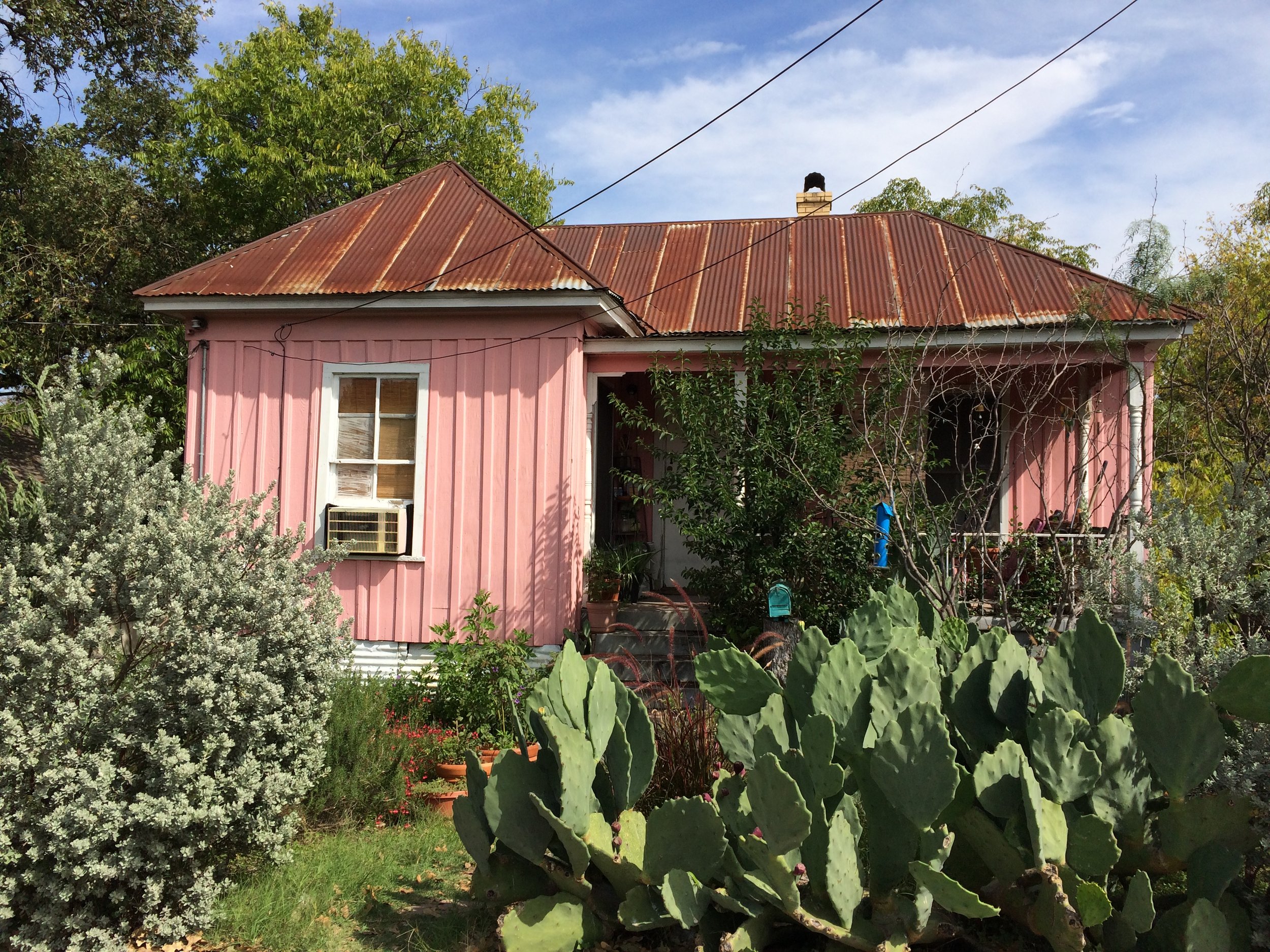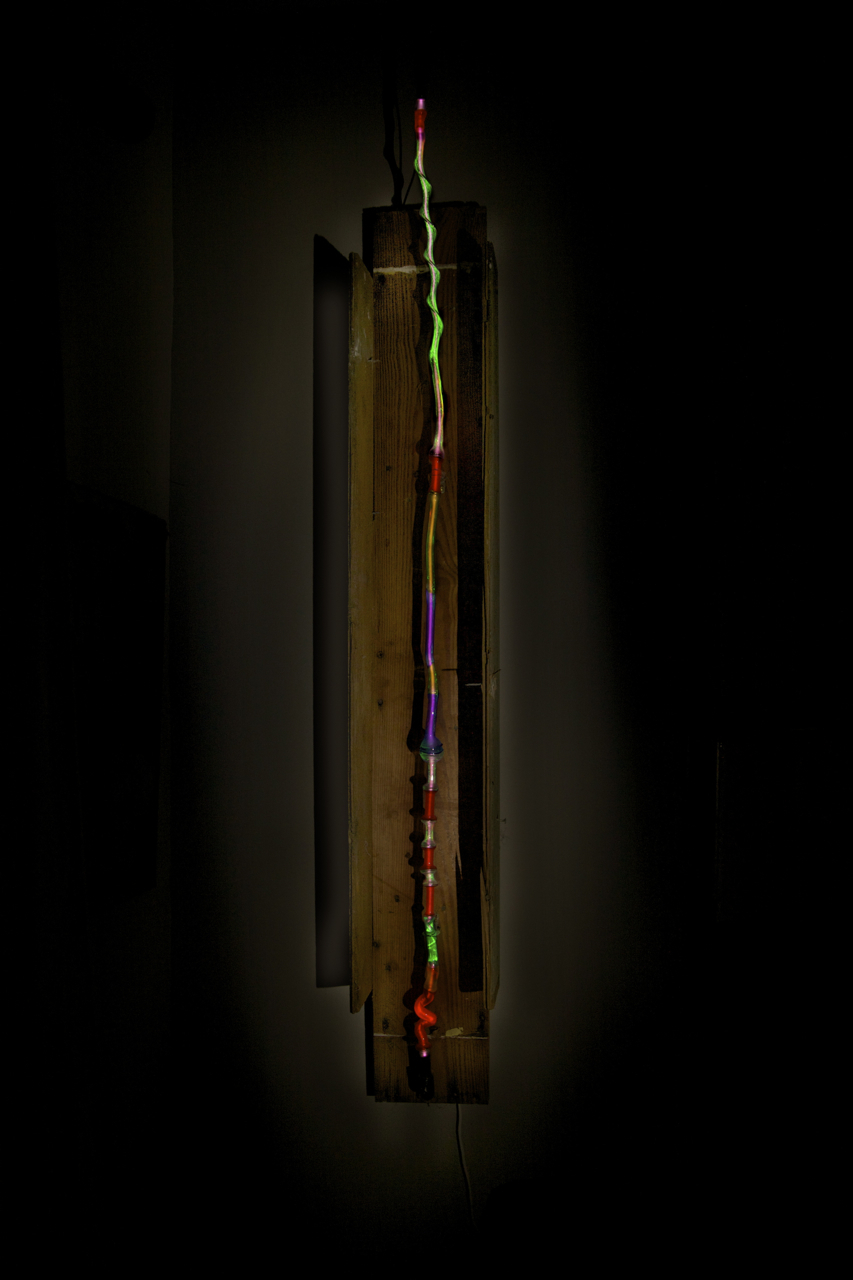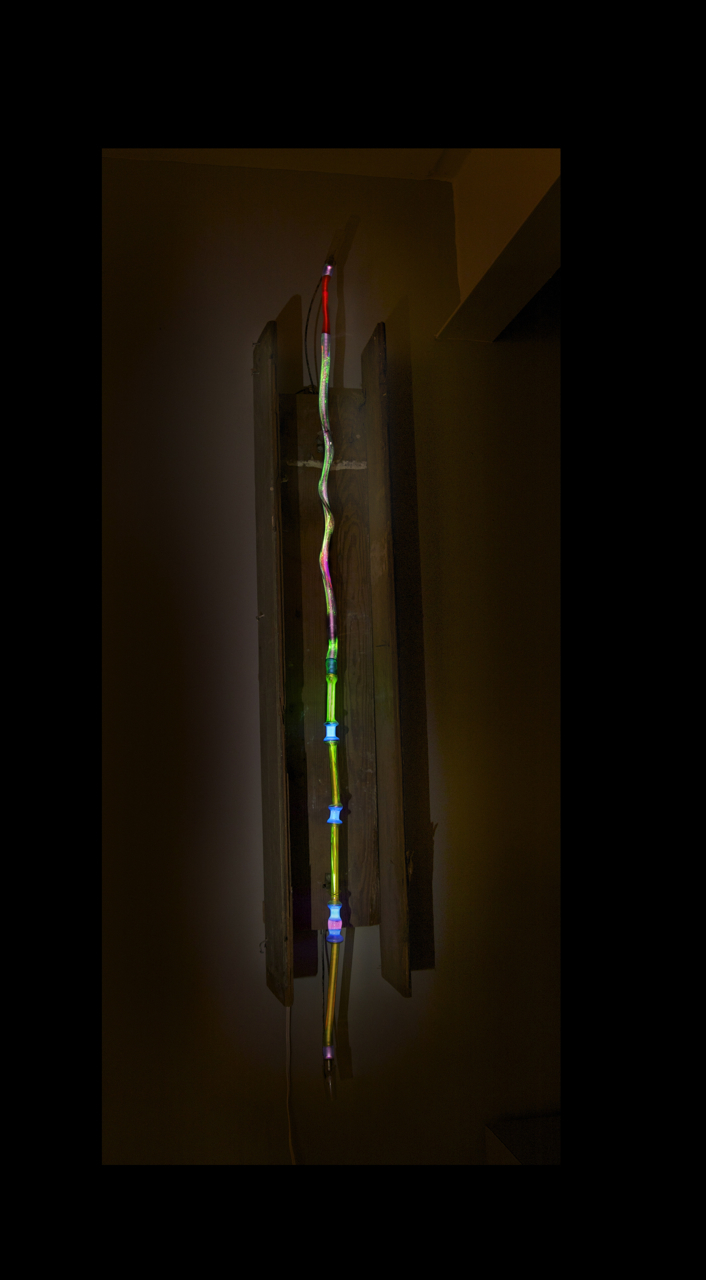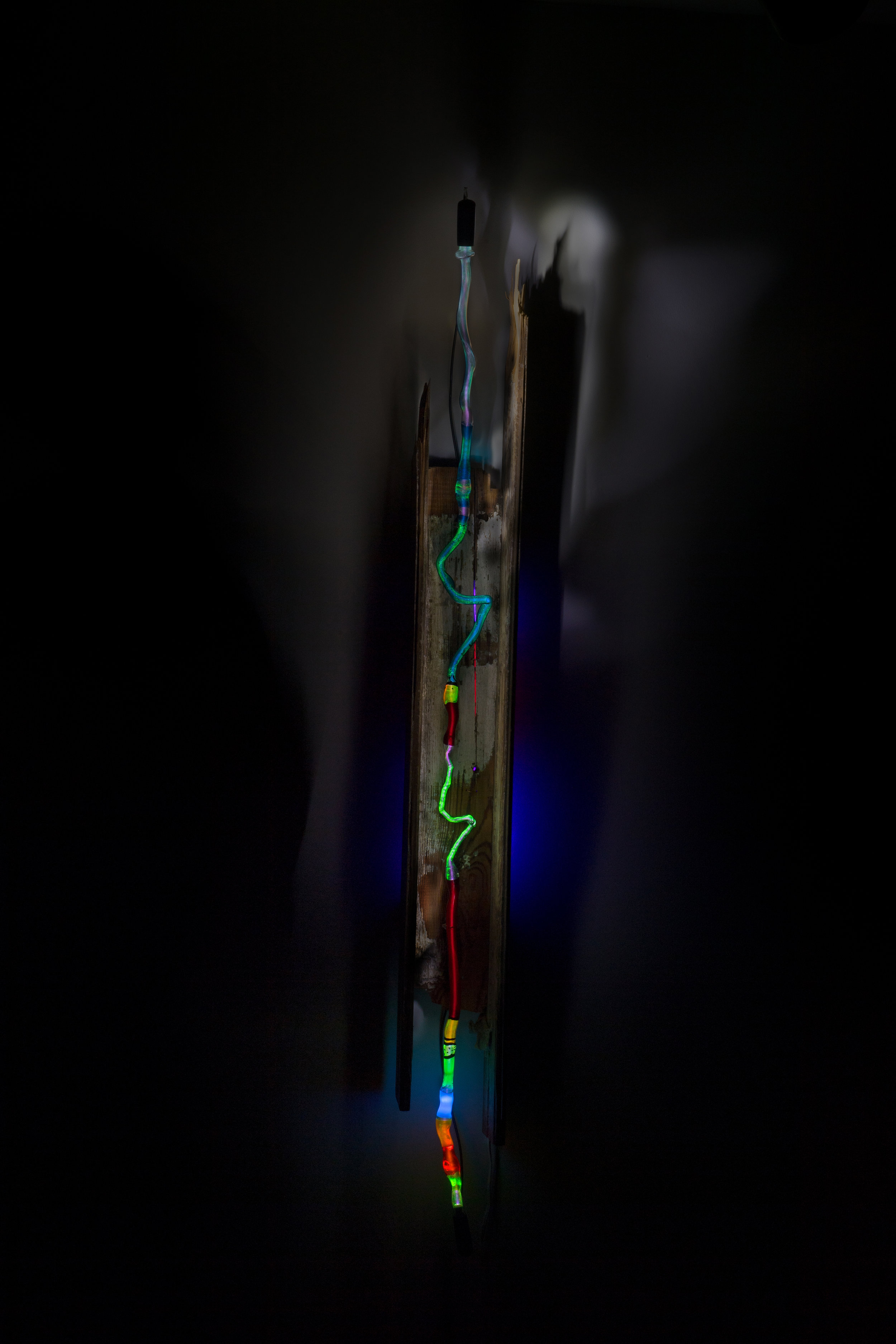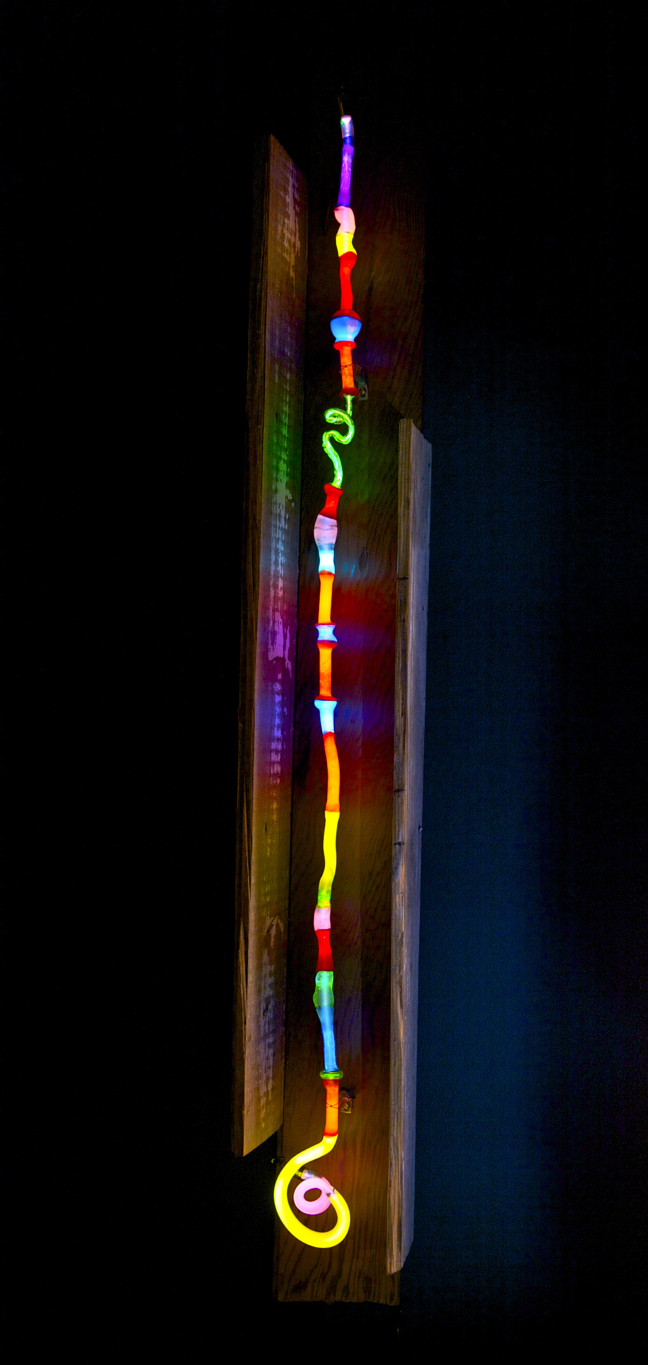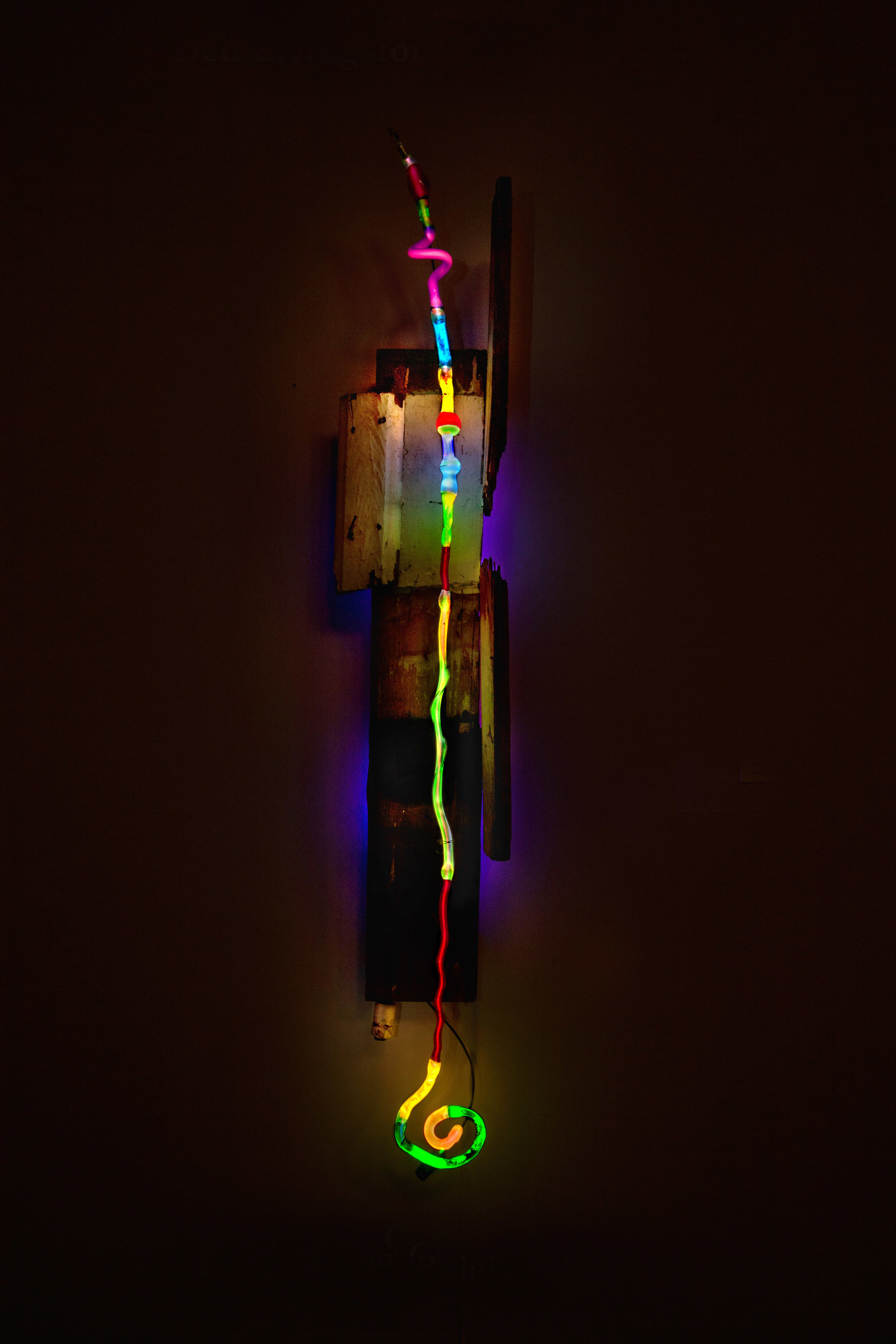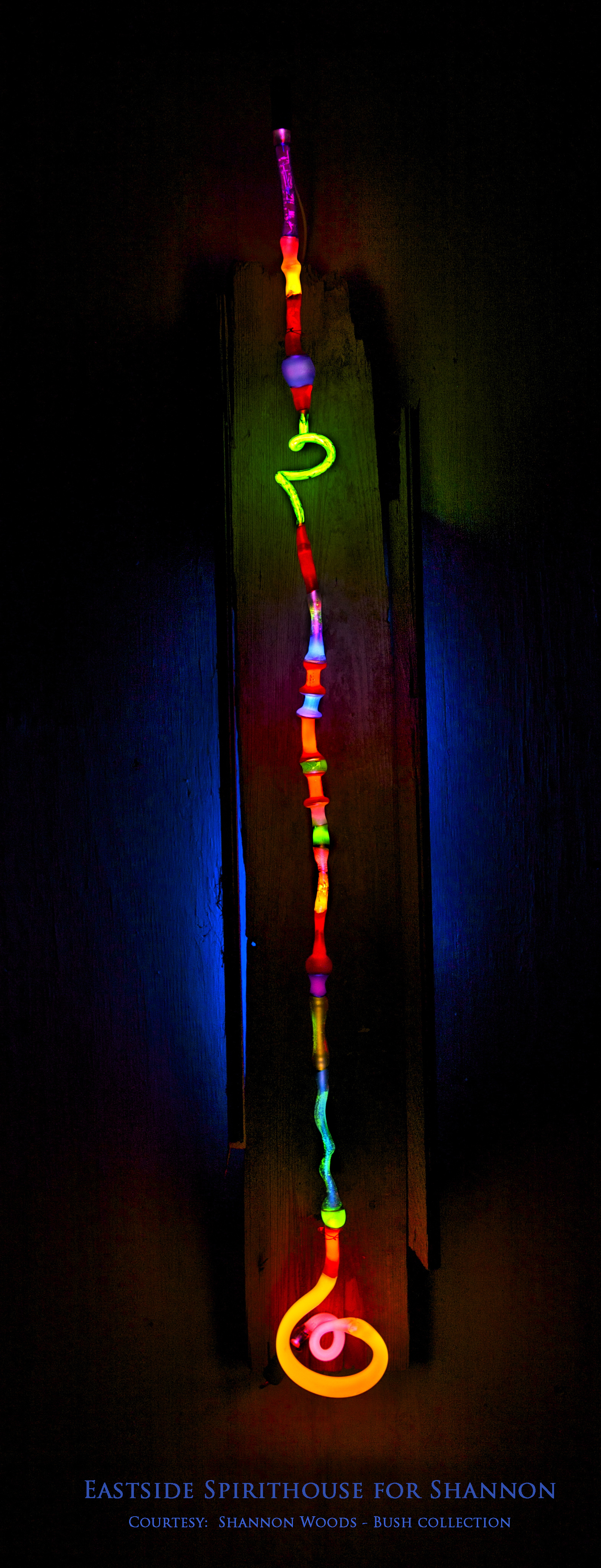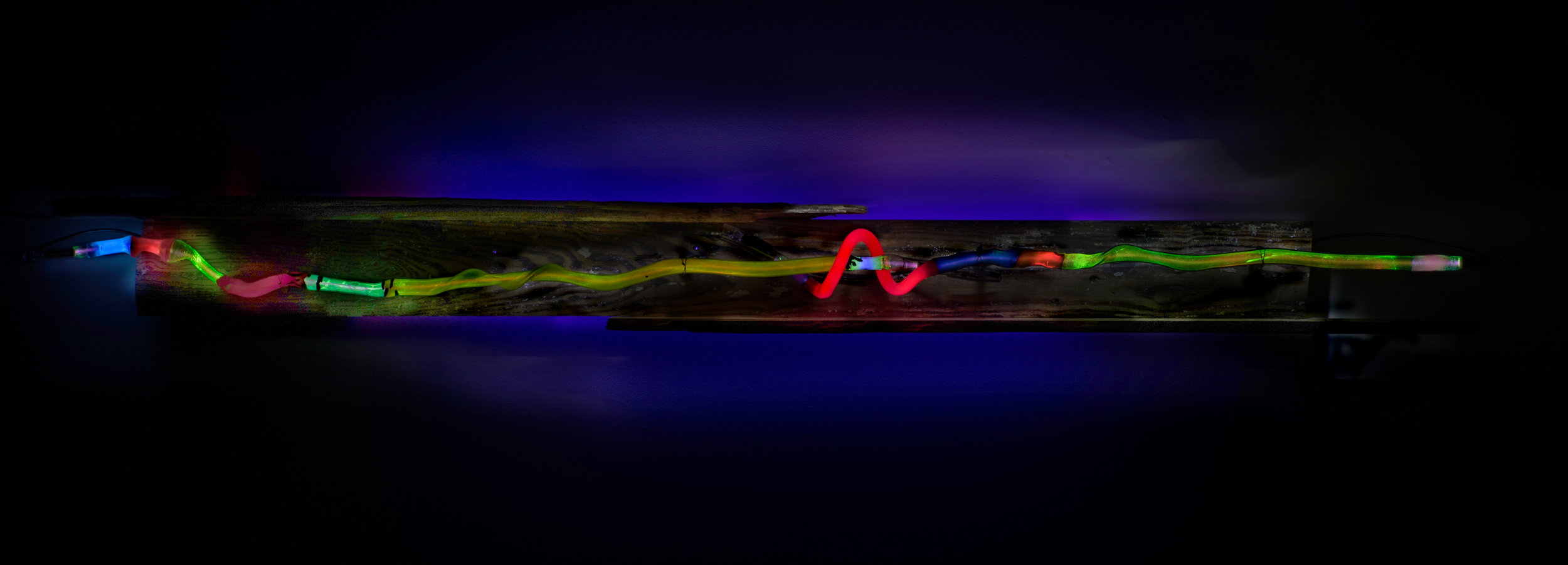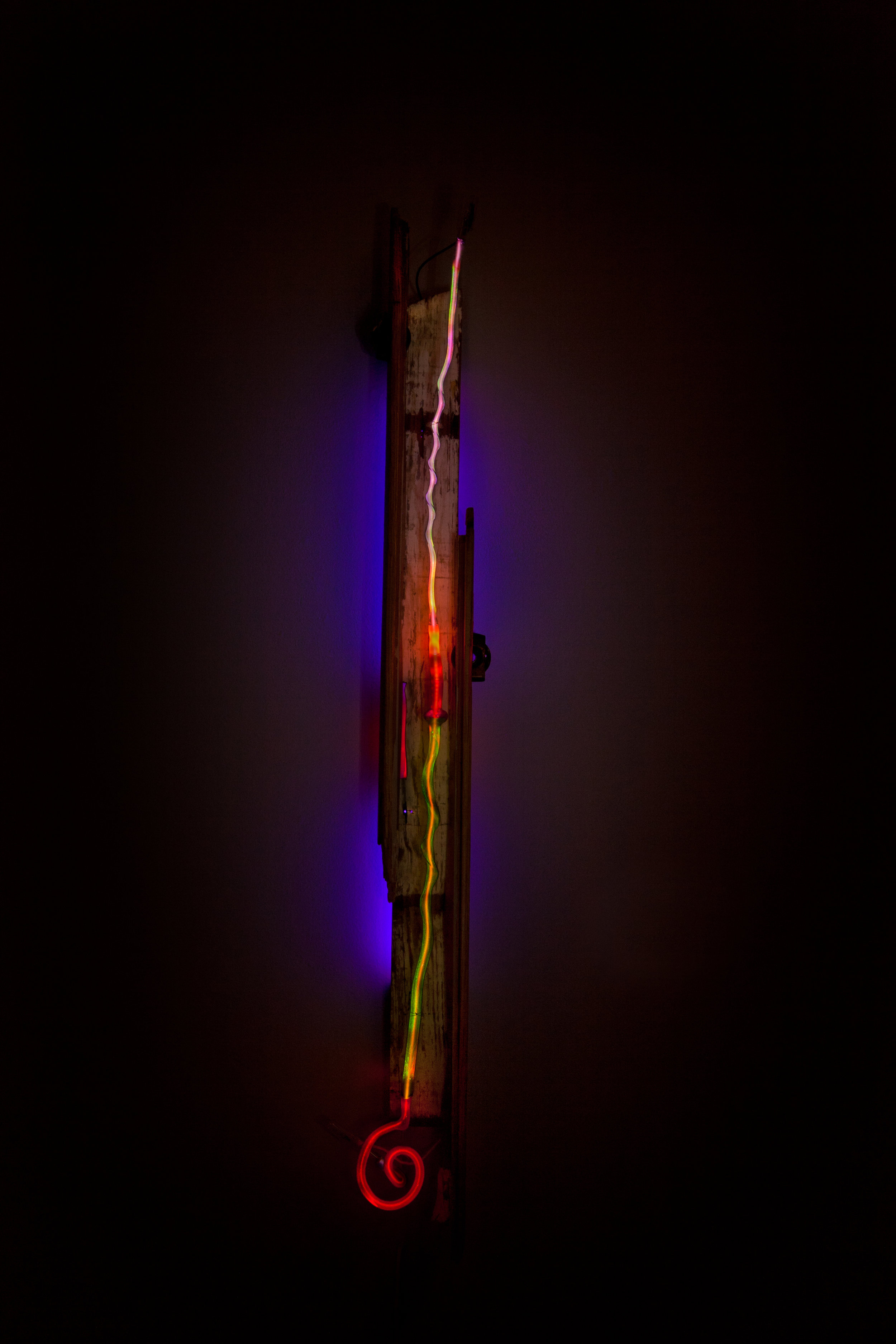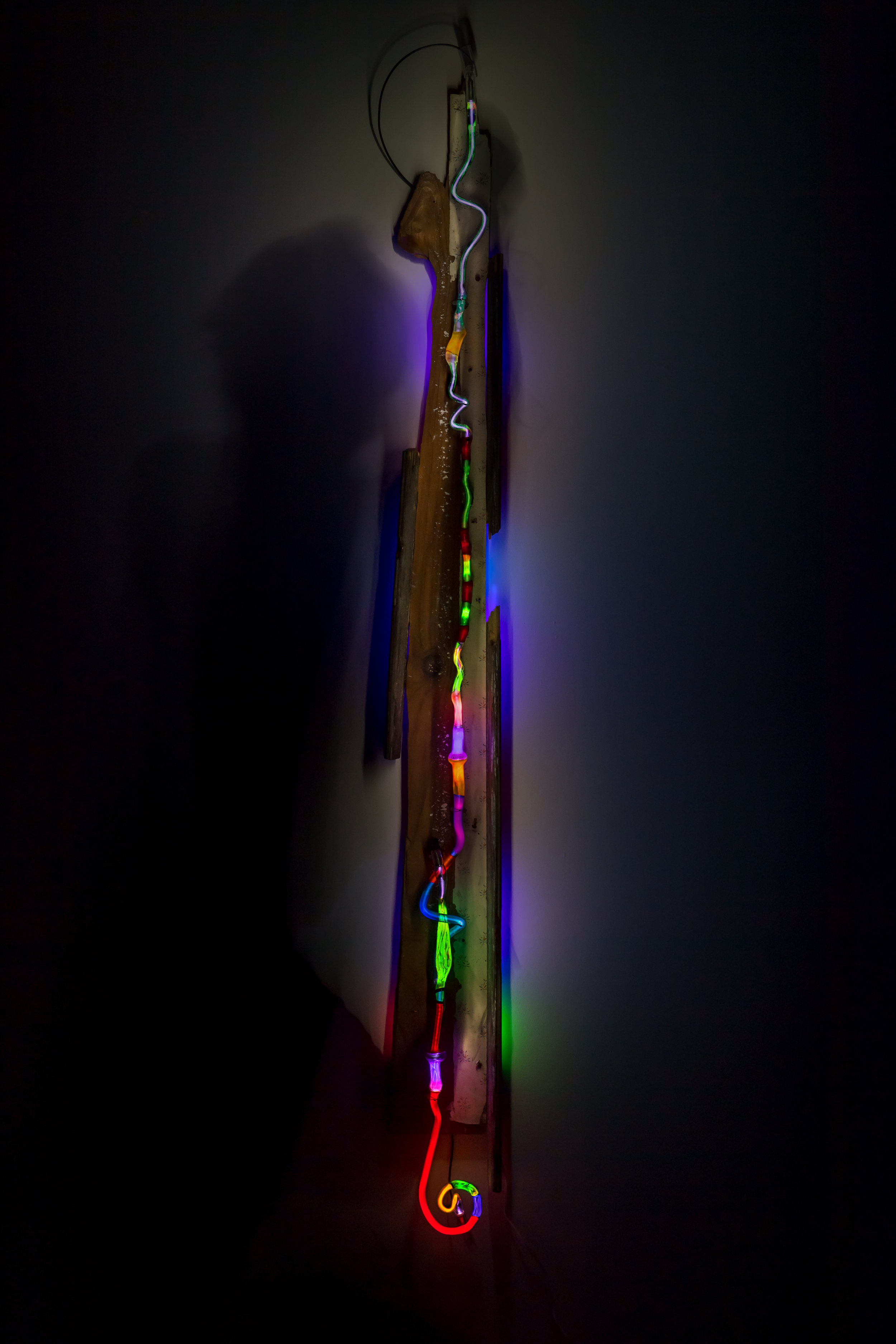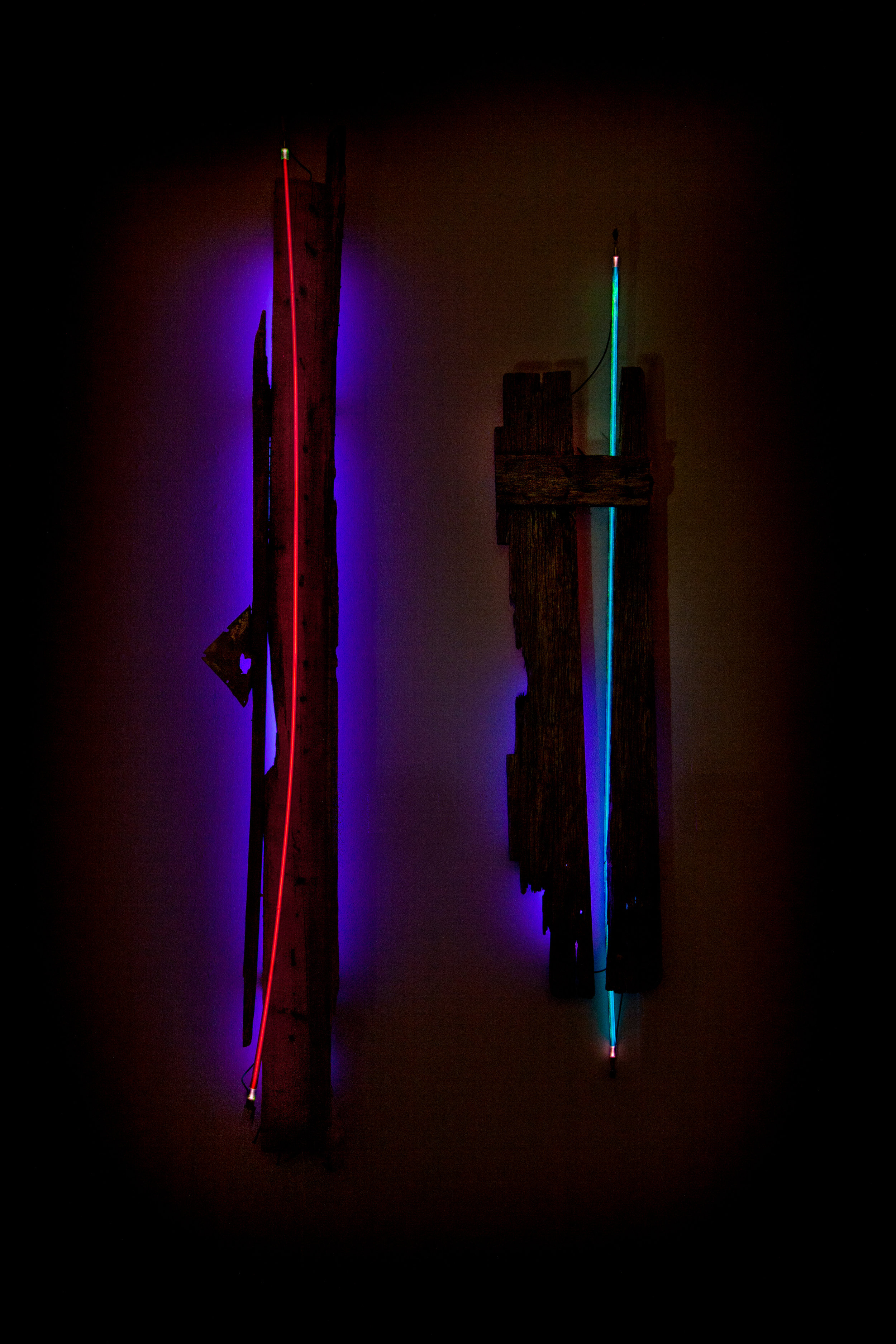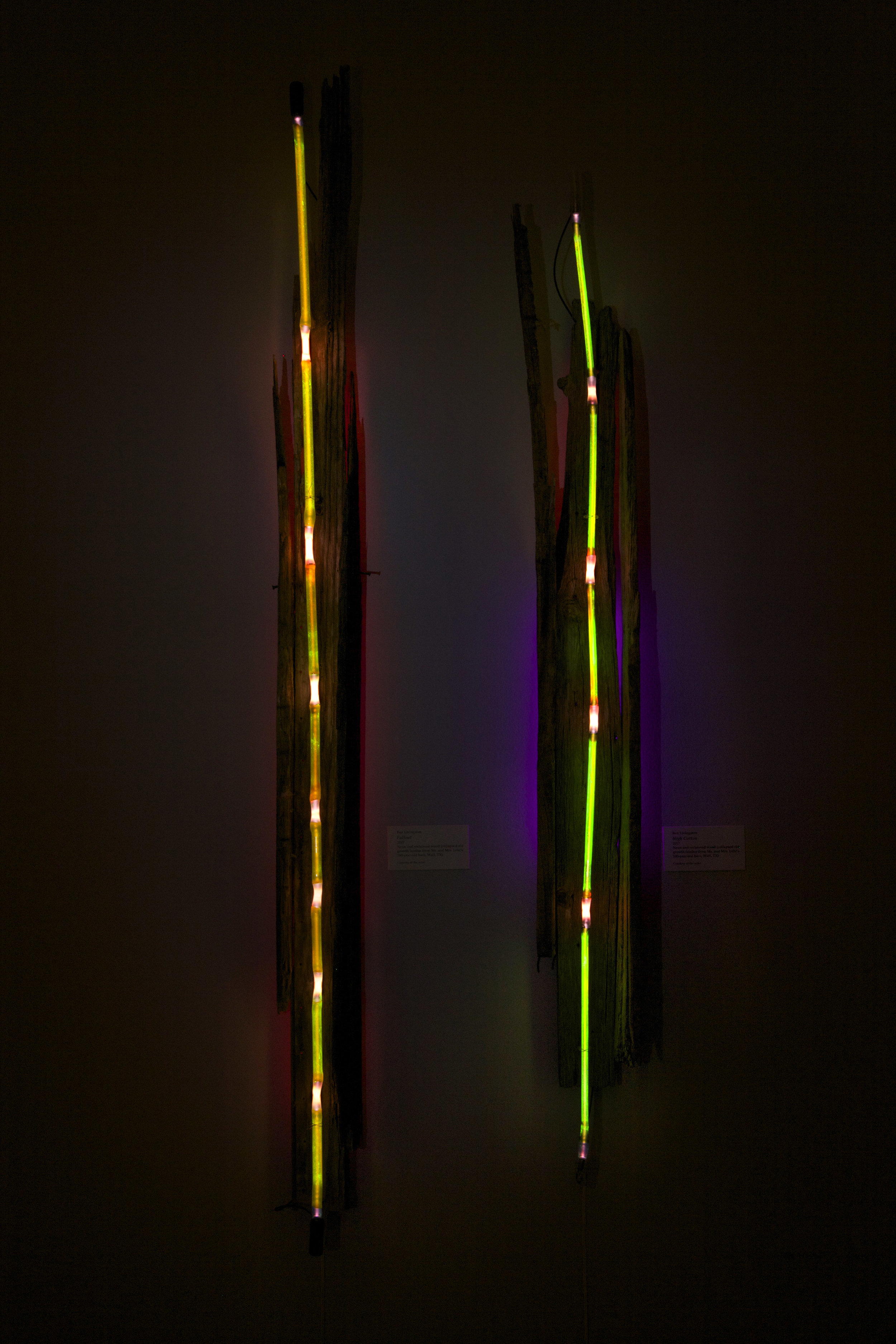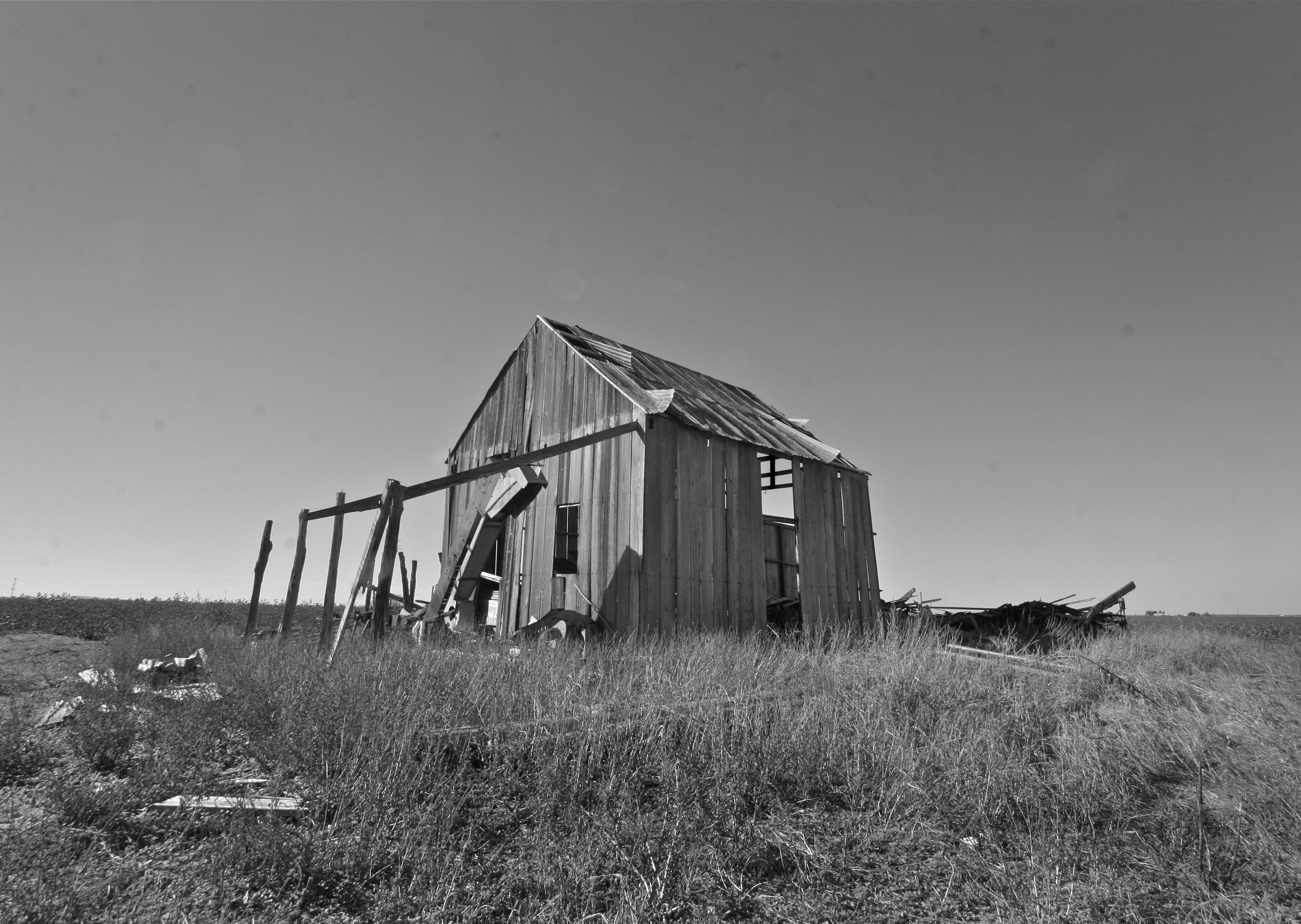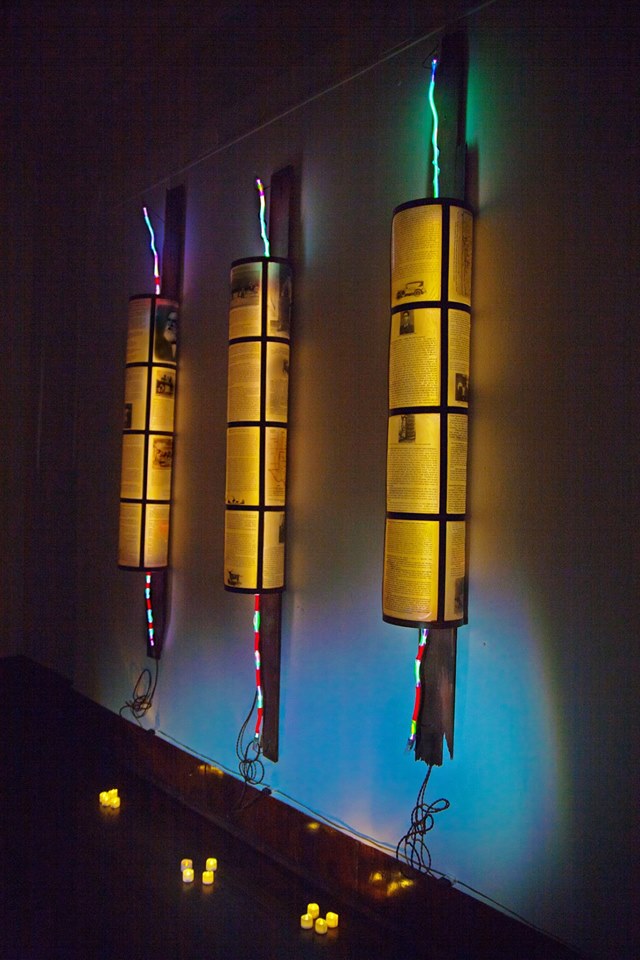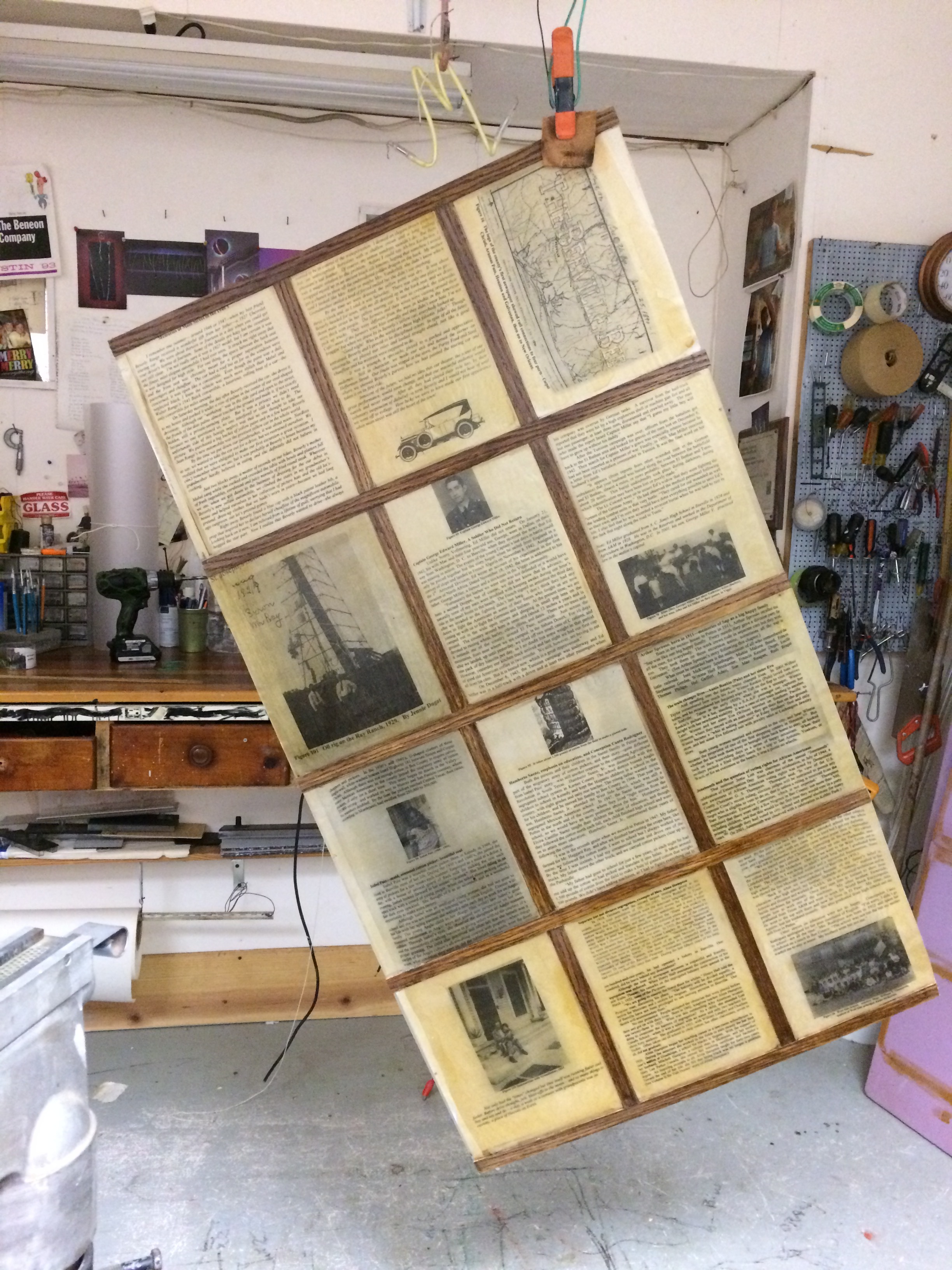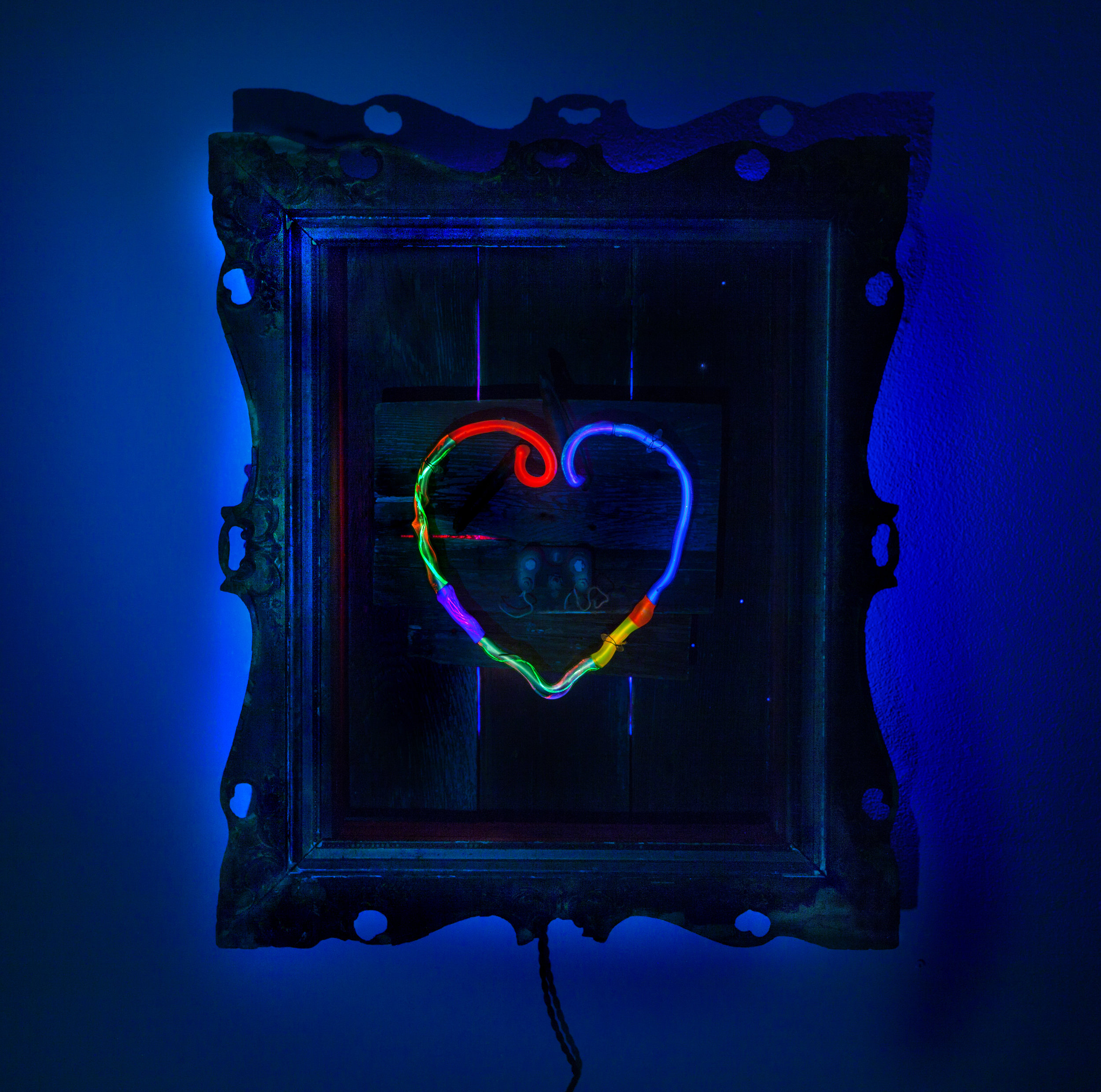SpiritHouse
The Spirit House Odyssey & Exhibits
How it Began…
In the winter of 1993, I traveled to Southeast Asia and stumbled upon all these beautiful little shrines filled with a whole slew of indefinable adornments. I learned they are called “Spirit Houses,” or phi houses. They look like miniature Wat temples or old rustic houses where spirits are coaxed into residing there by offerings of incense, flowers, food and bottles of red Fanta soda. Depending on the quality of the gifts and the spirit’s mood, it will fill your home with ill health, poverty and sadness or hook you up with a great life.
Over the years and several trips to Southeast Asia, I saw many versions of Spirit Houses. Thailand. Laos. Cambodia. Myanmar. As a Westerner, I was struck by each culture’s tradition of honoring nature and their ancestors through these little shrines. Spirit Houses ask us to take a minute and pay our respects to nature, to our past and ask for protection. That’s something we in the West have left behind in our quest for the next big thing.
If you would like to read more about this Spirit House adventure, here is a link to the Spirit House Safari 2007.
Fast Forward to Fall 2008…
I am riding my bike in east Austin and come upon an old house being demolished. I knew it was an E. J. Hofheinz house. It’s my understanding that Hofheinz built these houses to sell to emancipated slaves. When I saw that backhoe smashing through the walls of this little house, I swear I could hear it crying out in agony. As the boards were being ripped apart, I could feel the generations that made this place their home collapsing into the dust. The demolished house and the ghosts within were about to be hauled off to the landfill. It dawned on me that by combining my neon art with the materials from this house, I might revitalize the existence of the place and its people. I found a mission. I became a steward of ancestors and nature. The Hofheinz house inspired the first Spirit House Exhibits at Clayworks in 2008.
An Overview of the Traveling Spirit House Exhibit
A ‘spirit house’ exhibit can happen anywhere. It begins with the gathering of random local historical artifacts and photographs, which are displayed in the entryway of a main gallery space. These relics are meant to evoke personal memories of the community.
The rest of the gallery space is dedicated to the “Spirit Houses” made from locally found materials. In some cases, those materials might be broken or rotted wood from collapsed structures. In another instance, it might words from a historical document or photographs. The process, for me, is finding the spirit within the community and bringing it to light. I never know where I will find the spirit until it’s right in front of me.
A neon ‘spirit antenna’ is then cradled inside each of the newly-repurposed materials in order to release and revitalize the spirits locked within. This design creates an ethereal connection between our day-to-day reality and a more subtle dimension where our ancestors and true nature reside. In that merging, there is a movement of time where everything, before and after us, exists. I like what William S. Burroughs says: “When you cut into the present, the future leaks out.” And, for me, the past comes to light.
Exhibits & Lessons Along the Way
Eastside Spirit House, Clayworks Gallery, East Austin Studio Tour, 2008
This exhibit was my first opportunity to combine the notion of Spirit Houses from Southeast Asia with the spirits disappearing in the houses of a gentrifying Austin. I used a lot of scavenged material from a collapsed Hofheinz house: square nails; really old ceramic insulators; vividly patterned wallpaper on cheesecloth; layered wood/linoleum/vinyl flooring and rough sawn long leaf pine that dates back a thousand years. Then I built Spirit boxes in which I placed the neon—the spiritual antennae—to wake up the spirits in the Hofheinz materials. Spending time making these Spirit Houses made me observe my own fear of not mattering when my own ‘house’ collapses.
Ghosts and Memories: San Angelo Spirit House, 2017-2018
For the San Angelo Museum of Fine Arts exhibit, I collaborated with director Howard Taylor who led me through a Tom Green County cotton field to a century old barn. I loaded four hundred pounds of weathered timber into my red Prius and drove it home. There, I created fourteen neon and wood Spirit Houses. When I came back to San Angelo to install the work, Taylor had created an adjoining exhibit of artifacts and images on loan from the Fort Concho National Historic Landmark: photographs of Booger Red Privett from Wild West Show history; Edith Grierson whose child ghost still haunts Fort Concho and Edith’s porcelain doll, to name a few.Together, the Spirit Houses and the Concho Valley exhibits were entitled I Was Once Here: Ghosts and Memories. “It is not a history exhibit,” notes Taylor. “It’s intended to provoke thoughts and memories of people and events which, in many cases, are long forgotten — and to sense the presence of those thoughts and memories in the Spirit Houses sculptures.”
Poesta Rising - Beeville's Ghosts, Memories and Spirit Houses, 2018
In Beeville, I wanted to include all the residents of this community: Anglo, Hispanic and African American. I pulled from all kinds of obscure resources: Margaret Moser’s book, Biography of a Particular Place; interviews about the fourth generation cowboy Juan Colunga and descendants of the Lott Canada School, the first school for black children in Beeville. But how to illuminate the spirit of this diverse community? First, I realized that words contain spirits. I took Moser’s book and illuminated her words and interviews as Spirit Houses. I featured the personal artifacts of Colunga from the McClanahan House and I created a documentary in which the Lott Canada descendants tell stories about their ancestors from slavery to the present. The vibration of all these words combined with light and ancient materials seem to suspend time. Within that moment, ghosts roam freely.
Pedro Chino.
